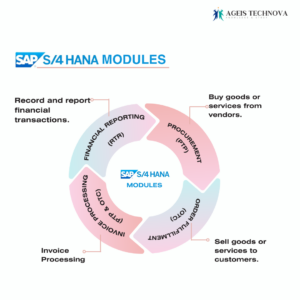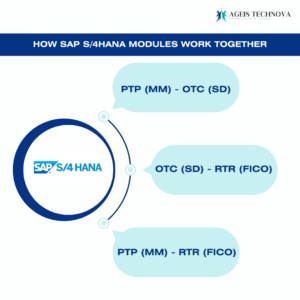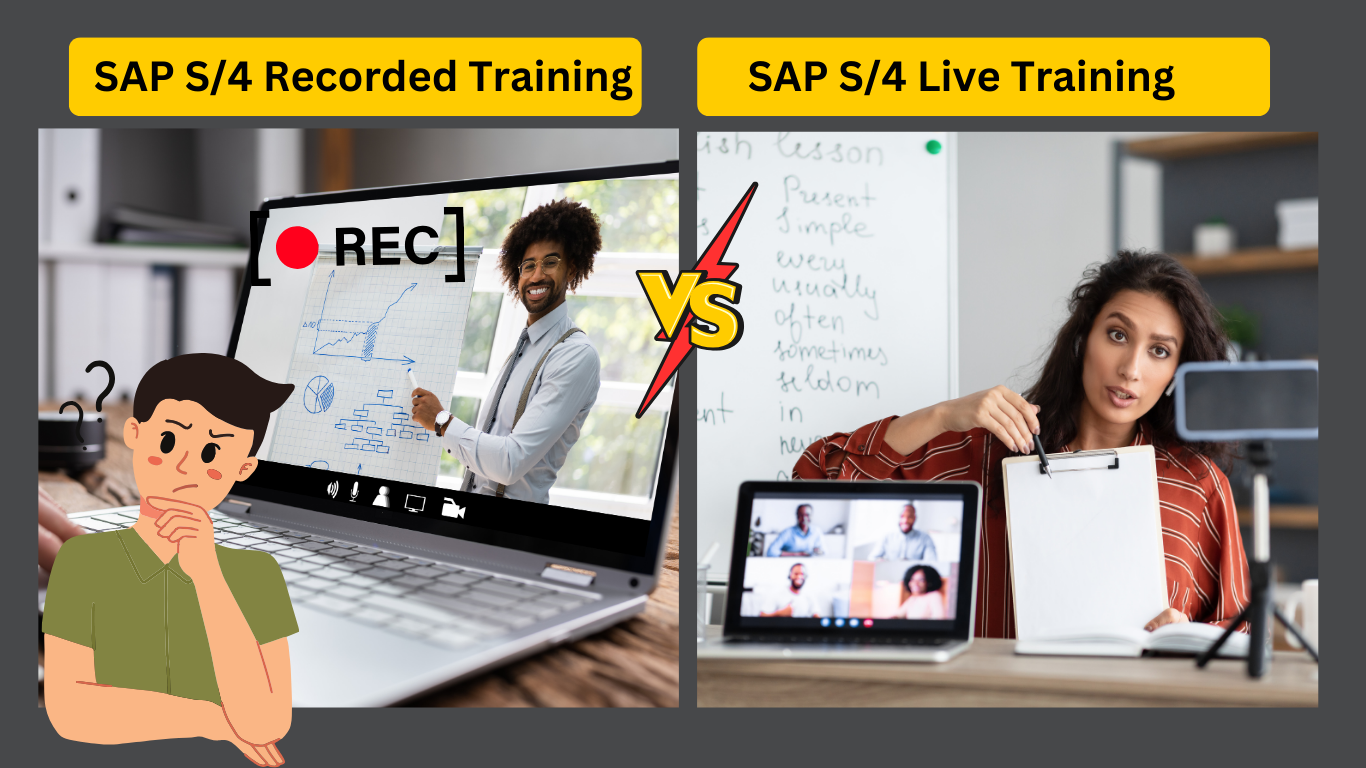Key Takeaways:
- Integrated Modules: SAP S/4HANA integrates core modules like MM, SD, and FICO to streamline business operations.
- End-to-End Processes: The PTP, OTC, and RTR processes cover procurement, sales, and financial reporting comprehensively.
- Data Flow: Seamless data sharing between modules ensures accurate financial data and real-time insights.
- Automation Benefits: Automation minimizes manual work, reduces errors, and speeds up operations.
- Strategic Decision-Making: Real-time data access improves financial oversight and supports better decision-making.
SAP S/4HANA represents a significant evolution in enterprise resource planning (ERP), offering a suite of integrated modules that streamline various business processes. Understanding how these modules interact can provide insights into optimizing operations across an organization.Have you ever wondered how the SAP S/4HANA modules like Procure-to-Pay (PTP), Order-to-Cash (OTC), and Record-to-Report (RTR) work together? Let me break it down for you in simple terms, including the key modules MM (Material Management), SD (Sales and Distribution), and FICO (Financial Accounting and Controlling.
How SAP S/4HANA Modules Integrate and Function as One

Step 1: Procurement (PTP)
- Buy goods or services from vendors.
- MM module handles purchase requisitions, purchase orders (PO), and invoices from vendors.
Step 2: Order Fulfillment (OTC)
- Sell goods or services to customers.
- SD module manages sales orders, billing, and customer invoices.
Step 3: Invoice Processing (PTP & OTC)
- Exchange invoices and payments with vendors and customers.
Step 4: Financial Reporting (RTR)
- Record and report financial transactions.
FICO module manages financial transactions, journal entries, and account balances.
How SAP S/4HANA Modules Work Together

Interface: PTP (MM) ↔ OTC (SD)
- Procurement Data: The PTP system sends procurement data like RFQs (Request for Quotation), PRs (Purchase Requisitions), POs, and invoices to the OTC system.
- Order Data: The OTC system sends order data like sales orders and invoices back to the PTP system.
- Inventory Data: The PTP system shares stock levels and inventory movements with the OTC system.
Interface: OTC (SD) ↔ RTR (FICO)
- Revenue Recognition: The OTC system sends revenue data like sales and revenue details to the RTR system.
- Accounts Receivable: Invoice and payment data flow from OTC to RTR.
- General Ledger: The RTR system sends journal entries and account balances back to the OTC system.
Interface: PTP (MM) ↔ RTR (FICO)
- Accounts Payable (AP): The PTP system sends invoice and payment details to the RTR system.
- General Ledger (GL): The RTR system shares general ledger data like journal entries and account balances
- Assets Accounting: PTP sends data on asset purchases and depreciation to RTR.
The Integration Advantage: Connecting PTP, OTC, and RTR Modules
Seamlessly integrating the Procure-to-Pay (PTP), Order-to-Cash (OTC), and Record-to-Report
(RTR) modules can transform your business operations by delivering:



